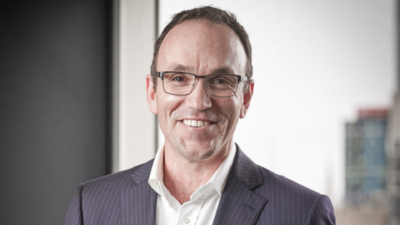Fees being traded down for longer lock-ups
(Pictured: Richard Johnston)
It wouldn’t be a hedge fund conference without a discussion about fees … and the AIMA Australia Hedge Fund Forum last week did not disappoint. One positive suggestion was: perhaps super funds should look to trade off lock-ups for lower fees.
Richard Johnston, the managing director of alternatives consultant Albourne Partners (Asia), which is an advisor to the Future Fund, was able to provide a dispassionate view. He observed that, clearly, fees were a much more sensitive issue in Australia than elsewhere. But capacity and liquidity should be considered in the same discussion.
Johnston’s evidence of the behaviour of the world’s biggest alternatives investors, contrasted with the trend, which started in the US and is spreading to Australia and elsewhere, for liquid hedge funds for the retail sector.
With pension funds, he said: “We see a lot more trading off of fees for lock-ups in the US… We see a lot more activity on share classes – they jump to the three-year [liquidity] class when given the choice… North Americans have wanted the liquidity mismatch fixed; they have wanted longer lock-ups. But Europeans have wanted liquidity at any cost. So, most managers now have better lock-ups because of the weight of money [from North America]. For endowments, it’s even longer. It is a long lock-up clubby world for many of the top equity managers.”
Apart from liquidity, big American investors are also concerned about who their co-investors are. “They don’t want to share a strategy with someone who wants liquidity,” Johnston said.
Georgina Dudley, senior consultant at JANA, however, said that Australian super funds valued liquidity in a different way to US pension funds because of member switching.
She said the subject of fees came up a lot in discussions with clients.
“We have a general fiduciary responsibility to challenge the fees being paid. We spend a lot of time discussing it,” she said. “The question is ‘why is 2 and 20 the right fee?’ People say ‘it’s because everyone does it’ or ‘because it looks cheap and poor quality if we don’t’. It’s not really good enough, that type of answer… We challenge the industry to move to a net-of-fees outcome [for measurement]. Not all have delivered over time and not all should be charging 2 and 20.”
Sam Mann, managing director of hedge fund of funds manager K2 Advisors, said his firm was seeing a lot of pressure on fees. “Larger institutional investors are definitely wanting to get more for their money… Global hedge fund managers are adapting. They are working more with their single managers to build bespoke portfolios. They start with: ‘what can we get for a certain fee?’










